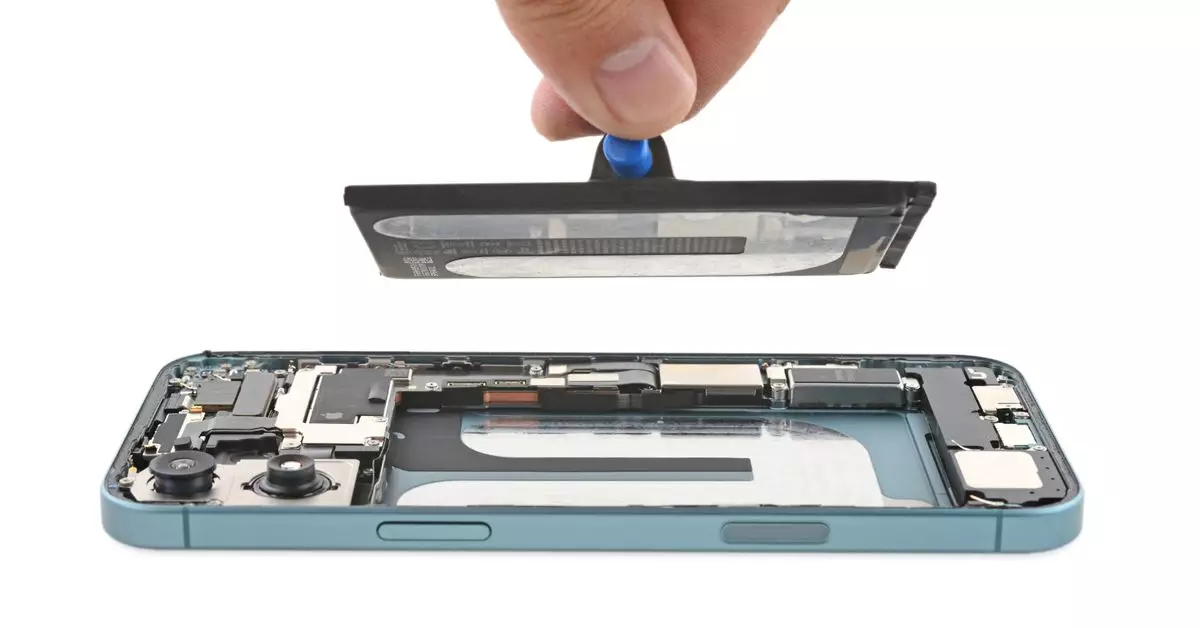In a time where consumer electronics seem to progress rapidly, the iPhone 16 lineup showcases a pivotal shift in repairability, an aspect often overlooked in the grand narrative of smartphone advancements. Historically, Apple has been criticized for making its devices challenging to repair, effectively locking users into manufacturer-led service models. However, with the introduction of the iPhone 16 series, particularly the base model, we witness a concerted effort to simplify repairs and empower users, all while maintaining the aesthetic sophistication and performance expected from the tech giant.
The unveiling of the iPhone 16 has sparked interest not only among consumers but also among repair advocates, particularly iFixit. As the team delves into disassembly, the revelations are noteworthy. Unlike previous iterations, the iPhone 16’s battery utilizes an electrically debondable adhesive, offering a glimpse into a future where repairs could become less daunting. This innovation represents a critical step towards greater sustainability and user empowerment. By allowing users to replace batteries without specialized tools or expertise, Apple is addressing long-standing consumer concerns regarding device longevity.
Furthermore, the structural design features exposed during disassembly, such as the inclusion of a dedicated Camera control button and a well-engineered heat sink to manage the A18 chip’s thermal output, illustrate Apple’s intent to prioritize performance and user interaction. The presence of a flex cable that measures applied force adds depth to the device’s functionality, indicating advancements in tactile interaction that could enhance user experience significantly.
Perhaps the most scrutinized aspect of the iPhone 16 is its new adhesive technology, which has revolutionized how batteries can be replaced. According to Apple’s repair guides and the tests conducted by iFixit, the electrically activatable adhesive allows for battery removal with unprecedented ease. By applying a current, consumers can effectively loosen the adhesive binding the battery to the device, which is a monumental improvement over traditional methods requiring heat or cumbersome tools.
This innovation is not merely a technical novelty; it addresses a crucial barrier to sustainability. As devices become more entrenched in our lives, the ability to replace individual components such as batteries can significantly reduce electronic waste and extend the lifespan of devices beyond their current limitations.
The introduction of easily replaceable components underlines a cultural shift within Apple toward sustainability and user agency. By enabling consumers to carry out simple repairs, the tech giant is not only fostering a more responsible approach to electronics but also aligning with the growing global movement toward repairable products. This could pave the way for legislative changes and a broader acceptance of “Right to Repair” initiatives, encouraging other manufacturers to consider the repairability of their devices.
Apple’s strides in the iPhone 16 lineup represent a potential turning point in the ongoing conversation about repairability in consumer electronics. As we move forward, the implications of these innovations could resonate far beyond Apple, altering consumer expectations and industry standards alike.


Leave a Reply